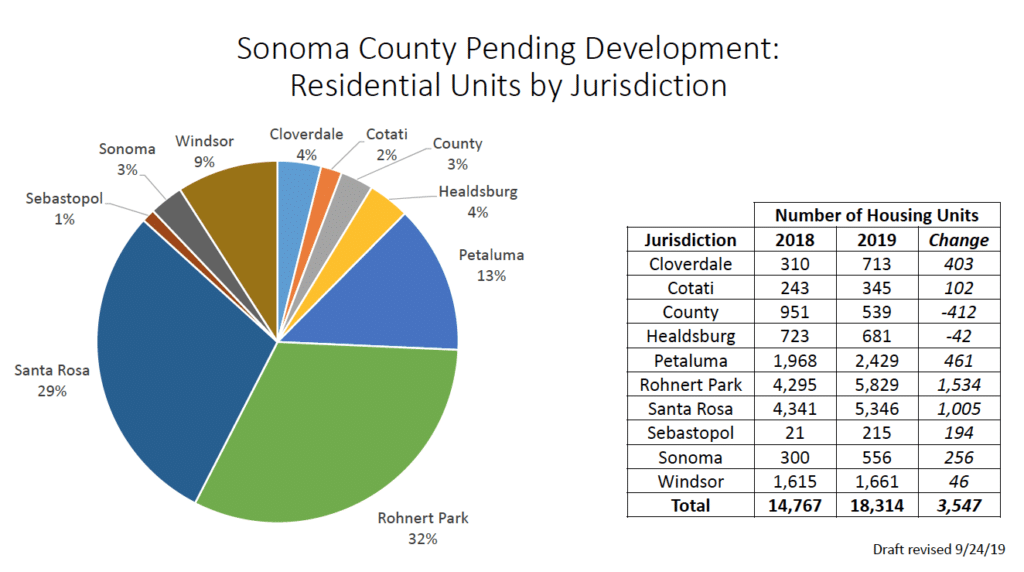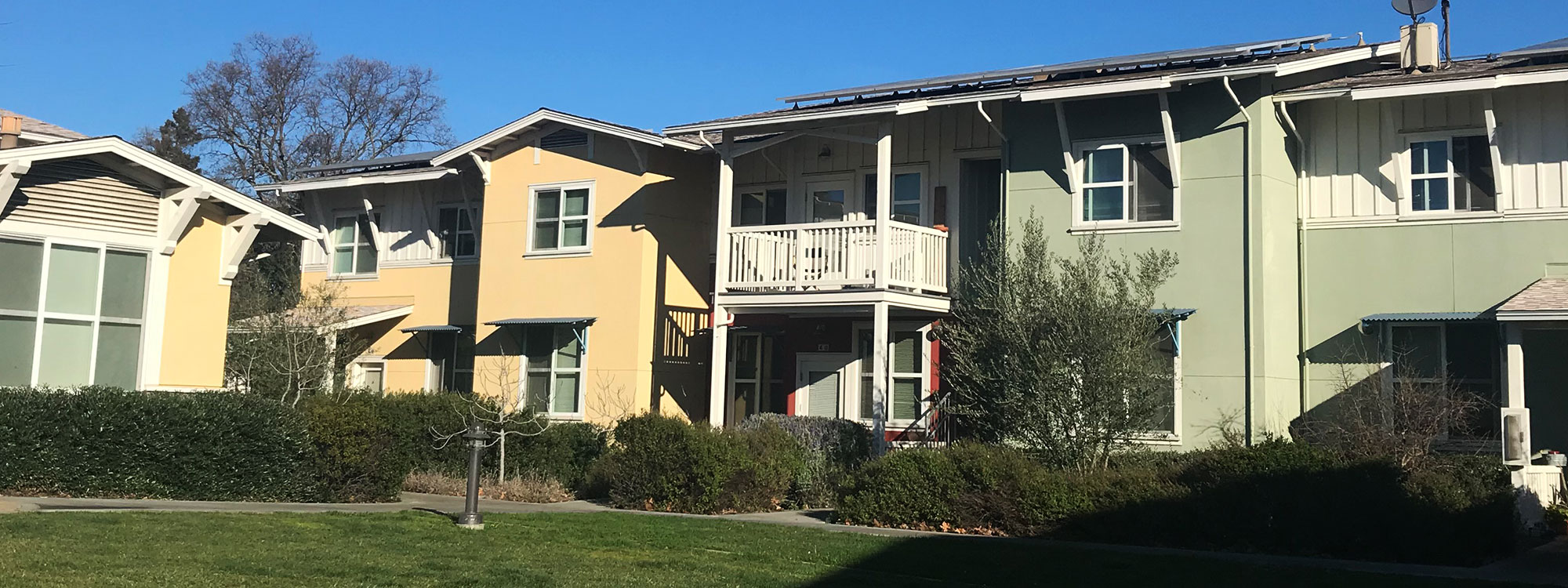Around the Bay Area, more homes are getting built every day. It will take time to fill the need for homes that everyone can afford, but there is relief on the horizon.
Here in Sonoma County where I do most of my work in the North Bay, more than 18,000 new places to live are in the pipeline within existing cities and towns — not including the rebuild of 5,000 homes lost from the wildfires. In fact, the number of new homes in the county pipeline jumped by more than 2,000 compared to last year.
Best of all, these new homes are focused on climate-healthy housing near services, inside Urban Growth Boundaries, and within existing communities. More than half of new homes are being built in the biggest cities of Santa Rosa and Rohnert Park. In Rohnert Park, an estimated 5,829 new homes are in the works, and in Santa Rosa, it’s 5,346. This includes all pending development and permitted projects, according to the Sonoma County Transportation Authority.

There is plenty of room inside our towns and cities under existing General Plans to meet our growth needs. From a regional perspective, the Metropolitan Transportation Commission recently reported that 90 percent of public comment on the new Horizons Plan Bay Area 2050 was in favor of focusing growth within Urban Growth Boundaries.
Examples of How We’re Growing
Santa Rosa
Right now, North Bay non-profit developer Burbank Housing has 790 new deed-restricted affordable homes in the works in Sonoma, Napa, and other North Bay counties. Yes, the waiting list is long, but putting together complicated funding takes time.
On a recent tour of the Crossroads Apartments in newly annexed Roseland in Santa Rosa, longtime Burbank Housing member Bill Bowman explained the nuts and bolts of getting good housing built. Funding is the number one obstacle, which involves a complex web of state, federal and non-profit investment. Thankfully, new sources of funding are making a difference.
Crossroads Apartments, which opened in 2018, is a lovely complex that provides deed-restricted affordable rental homes that are being developed for working families, seniors, and veterans. The residents we talked to were quite happy living there and felt lucky to have been chosen through a lottery system.
The City of Santa Rosa just approved the expansive Caritas Village by Catholic Charities that transforms existing homeless services to an entire city block with expanded support and 126 new affordable homes.
Rohnert Park
Rohnert Park is building the most homes of all from affordable to market-rate within its Urban Growth Boundary, which was renewed for another 20 years in November 2019 with 90 percent of the vote.
One important development to watch is the upcoming Sonoma Mountain Village (SOMO) project, which we endorsed about a decade ago. Since then, SOMO Village has become a concert and event venue and hub for forward-looking businesses and entrepreneurs, including Traditional Medicinals and World Centric. Credo High School, a One Planet and Waldorf inspired public Charter High School is also located here. Not to mention, the Heirloom Café (formerly Sally Tomatoes) is a great spot for lunch, too!
After delays due to the last recession, the residential portion of the village is back on track and going through environmental review. Nearly a decade ago, Greenbelt Alliance endorsed the SOMO Village with plans for 1,694 homes, apartments, and townhouses along with 198-second dwelling units. At least 15 percent of these homes will be affordable.
City of Sonoma
Even the small, historic town of Sonoma is making strides on affordable housing. Recently, the new Altamira Apartments project by non-profit SAHA broke ground, providing 50 affordable homes for struggling families.
I also recently took a stroll around the Valley Oaks apartments in Sonoma which are an example of the missing middle housing that we need for moderate and low-income working families and seniors.
Greenbelt Alliance and Citizens to Renew the City Urban Growth Boundary estimate that there is room for another 800 to 1,000 places to live within the UGB that would accommodate growth for the next 20 years or more. Pressure to build outside the UGB has been rebuked in favor of climate-healthy growth.
With a population of about 11,000 and an estimated 5,400 existing housing units, Sonoma is on track to meet its state-mandated housing units which were only 137. That number may seem low, but it’s because Sonoma is far from transit and commercial hubs. The state of California is focused on developing close to existing public transit and jobs that are typically in bigger cities like Santa Rosa.
Housing and Greenbelts
In Sonoma County, several new non-profit groups and coalitions have popped up to help move housing forward. They are focused primarily on messaging and getting the public on board to embrace new ways of creating communities and neighborhoods that go beyond single-family homes and large multi-family apartment blocks.
A key finding from housing consultant Dr. Tiffany Manuel didn’t surprise us at all. Hired by local housing advocates, Dr. Manuel spoke with many residents who were facing housing challenges and asked why they stayed here anyway. The overwhelming response?
“What we heard consistently was the environment. What was interesting about this was that across the income spectrum whether folks were low income or middle class or high income, the environment was the number one thing: ‘We love the weather, the lakes, the streams, the valleys, the hiking.’” Read more about her findings here.
Greenbelt Alliance will continue to advance climate-healthy development and keep our greenbelts intact. To learn more about our work in the North Bay, contact me today!




